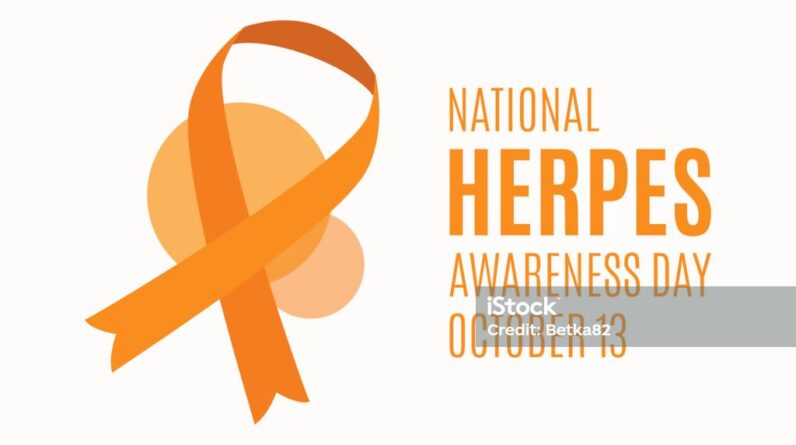The International Day for Disaster Reduction aims to raise awareness about the importance of reducing the risks and impacts of disasters. Each year, on October 13th, this global observance promotes efforts to build more resilient communities and enhance disaster preparedness worldwide.
By focusing on disaster risk reduction, the day highlights the need for proactive measures to mitigate the effects of natural and human-induced hazards. Recognizing that disasters can have devastating consequences, the International Day for Disaster Reduction emphasizes the importance of understanding and addressing risks in order to create safer and more sustainable societies.
As we face increasing challenges posed by climate change and other factors, this day serves as a reminder of the urgent need to prioritize disaster resilience and build a safer future for all.
International Day For Disaster Reduction: An Overview
The International Day for Disaster Reduction is observed on October 13th each year to promote a global culture of disaster reduction. This day aims to raise awareness about the importance of disaster reduction and encourage individuals, communities, and governments to take actions to minimize the impact of disasters.
Disasters have devastating consequences on social, economic, and environmental aspects, making disaster reduction crucial. The International Day for Disaster Reduction provides an opportunity to highlight the significance of proactive measures to prevent and mitigate disasters.
The International Strategy for Disaster Reduction has been actively working with governments, organizations, and communities worldwide to promote disaster risk reduction. Through awareness campaigns, education, and practical initiatives, the international community strives to build resilience and reduce vulnerabilities in the face of various hazards.
By acknowledging the importance of disaster reduction and taking concrete steps to implement risk reduction measures, countries can enhance their preparedness and response capabilities, ultimately saving lives and protecting livelihoods.

Credit: www.postermywall.com
Promoting Disaster Risk Reduction
International Day for Disaster Reduction is an annual event aimed at promoting disaster risk reduction. Through collaborative efforts, various organizations and individuals work towards raising awareness about the importance of disaster risk reduction and its role in mitigating the impacts of disasters. One key aspect of promoting disaster risk reduction is encouraging stakeholder participation and engagement. By involving communities, governments, and other relevant entities, a collective effort can be made to address and reduce disaster risks. Additionally, building resilience in communities is crucial for minimizing the vulnerability of populations to disasters. This involves implementing measures such as early warning systems, infrastructure development, and education on disaster preparedness. By focusing on collaborative efforts, encouraging participation, and building resilience, disaster risk reduction can be effectively pursued and contribute to creating a safer and more sustainable future.
Impact Of Natural Disasters On Communities
Natural disasters can have devastating consequences for communities around the world. The impact of these events is far-reaching, causing significant humanitarian crises and loss of lives.
Communities affected by natural disasters often face immense challenges in terms of recovery and rebuilding. The devastation caused by these events can be overwhelming, leading to the displacement of people and the destruction of homes and infrastructure.
| Humanitarian crises and loss of lives | Economic and infrastructural damage |
|---|---|
| The aftermath of a natural disaster often results in a humanitarian crisis, with communities facing a shortage of basic necessities such as food, water, and medical aid. Lives are tragically lost, leaving families and communities mourning the loss of loved ones. | The economic impact of natural disasters is staggering, with billions of dollars being spent on recovery efforts. In addition, the infrastructural damage caused by these events can take years to repair, disrupting the normal functioning of communities. |
The international community recognizes the need to reduce the risk and impact of natural disasters. The International Day for Disaster Reduction aims to raise awareness and promote actions contributing to disaster risk reduction and resilience building.
Celebrating International Day For Disaster Reduction
International Day for Disaster Reduction is an annual event celebrated on October 13th, aimed at raising awareness and promoting actions to reduce the risks and impacts of disasters. This day serves as a platform for communities, organizations, and individuals to come together and engage in various events and initiatives.
Community events and initiatives play a crucial role in commemorating this day. They allow local communities to share their experiences, knowledge, and best practices in disaster risk reduction. By promoting knowledge sharing and education, these events help enhance awareness about the importance of disaster preparedness and resilience.
These initiatives also play a vital role in inspiring action and involvement. Through workshops, conferences, and exhibitions, individuals and organizations collaborate to generate innovative ideas and solutions for disaster risk reduction. They encourage active participation and engagement to protect communities, infrastructure, and the environment from the impacts of disasters.
Success Stories In Disaster Reduction
International Day for Disaster Reduction is an important event that raises awareness and promotes strategies for disaster risk reduction. One key aspect of this initiative is highlighting success stories in disaster reduction. Case studies are a powerful way to showcase effective strategies and inspire others to take action.
Notable achievements in disaster risk reduction include successful initiatives in various countries and communities. These initiatives have shown that proactive planning, early warning systems, and community engagement can significantly reduce the impact of disasters. For example, a community in Japan implemented earthquake-resistant infrastructure and evacuation drills, resulting in minimized casualties during a recent earthquake.
These success stories also provide valuable lessons learned for future disaster reduction efforts. We can identify best practices and avoid repeating mistakes by studying what worked in these initiatives. For instance, a flood-prone region in Bangladesh implemented a comprehensive flood management system, including riverbank protection, early warning systems, and community training. This approach has significantly reduced the damage caused by floods and improved the community’s resilience.
Emphasizing these success stories and sharing lessons can empower individuals, communities, and organizations to take proactive measures in disaster risk reduction. We can collectively strive towards a safer and more resilient future by building upon these achievements.
The Role Of Governments And Organizations
The role of governments and organizations in disaster reduction is crucial in ensuring the safety and well-being of communities and minimizing the impact of natural and man-made disasters. Government policies and initiatives play a significant role in creating a framework for disaster risk management and mitigation.
Governments develop and implement disaster preparedness, response, recovery, and resilience policies. This includes creating effective early warning systems, conducting risk assessments, and establishing building codes and regulations. By investing in these measures, governments can reduce the vulnerability of communities to disasters.
International organizations, such as the United Nations Office for Disaster Risk Reduction (UNDRR) and the International Red Cross and Red Crescent Movement, work towards disaster reduction by providing technical expertise, promoting best practices, and coordinating disaster response efforts globally. They facilitate partnerships and collaborations between governments, civil society organizations, and private sectors to reduce disaster risks and build resilient communities.
| Government policies and initiatives | – Disaster preparedness and response | – Risk assessments and building codes | – Early warning systems |
| International organizations | – UNDRR | – Red Cross and Red Crescent | – Global partnerships |
By working together, governments and organizations can make significant progress in reducing the impact of disasters and protecting vulnerable communities.
The Future Of Disaster Reduction
The future of disaster reduction is greatly influenced by advancements in technology for early warning systems. These technological innovations are crucial in effectively mitigating the impact of disasters. With climate change creating more extreme weather events, it is imperative to have reliable early warning systems in place. These systems utilize sophisticated sensors and data analysis to detect and predict disasters before they occur. They enable authorities to issue timely warnings and mobilize resources for emergency response.
Furthermore, the impact of climate change on disaster risk cannot be ignored. Rising temperatures, changing precipitation patterns, and rising sea levels are intensifying natural disasters’ frequency and intensity. Adapting to these changes requires strategies for climate resilience and sustainable development. Governments and organizations are investing in technologies and practices that help reduce vulnerabilities and build resilient communities.
Innovations in disaster management are also driving effective response and recovery efforts. Remote sensing technologies, geographic information systems (GIS), and big data analytics are significant in mapping and assessing disaster-affected areas, facilitating targeted relief efforts, and planning reconstruction. The use of artificial intelligence (AI) and machine learning algorithms helps analyze large datasets to identify patterns and make informed decisions.
The future of disaster reduction lies in harnessing the potential of technology to improve early warning systems, enhance climate resilience, and optimize response strategies. By embracing these advancements, societies can better prepare for and mitigate the impact of disasters.
Key Challenges And Solutions
The International Day for Disaster Reduction is a crucial event highlighting the key challenges we face in reducing the impact of disasters. Overcoming these obstacles requires innovative approaches and solutions that address vulnerabilities and build resilience for a sustainable future.
One of the key challenges in disaster reduction efforts is identifying and understanding the vulnerabilities that communities and regions face. By conducting thorough risk assessments, we can gain insights into an area’s specific hazards, vulnerabilities, and capacities. This knowledge is essential for developing targeted strategies and interventions.
An innovative approach to disaster reduction is using technology and data-driven solutions. Advanced analytics and modeling techniques can provide valuable insights into the potential impact of disasters and help in planning and preparedness efforts. Additionally, leveraging technology for early warning systems and real-time monitoring can significantly improve response times and save lives.
Building resilience is another vital aspect of disaster reduction. This involves strengthening the capacity of communities to withstand and recover from disasters. Education and awareness campaigns can empower individuals and communities to take proactive measures and make informed decisions.
| Challenges | Solutions |
|---|---|
| Identifying vulnerabilities | Thorough risk assessments |
| Utilizing technology | Data-driven solutions, early warning systems, real-time monitoring |
| Building resilience | Education, awareness campaigns, capacity strengthening |
Frequently Asked Questions On International Day For Disaster Reduction
Why Do We Celebrate International Day For Disaster Reduction?
We celebrate International Day for Disaster Reduction to raise awareness and promote global efforts in preventing and reducing the impact of disasters. It serves as a time to highlight the importance of disaster risk management and encourage action towards building resilient communities.
Which Is The International Day For Disaster Reduction?
The International Day for Disaster Reduction is a global event that aims to raise awareness about disaster risk reduction and encourage action to prevent and reduce the impact of natural disasters. It is observed on October 13th every year.
What Is The Theme Of the International Day Of Disaster Reduction 2023?
The theme of International Day of Disaster Reduction 2023 has not been announced yet. Please stay tuned for updates.
What Is International Day For Disaster Reduction?
International Day for Disaster Reduction is a global observation that aims to raise awareness about disaster risk reduction and promote efforts to build resilient communities. It highlights the importance of implementing measures to prevent and mitigate the impacts of natural and human-made disasters.
Conclusion
Celebrate the International Day for Disaster Reduction by joining hands in creating a safer future for all. Together, let’s raise awareness, promote resilience, and take proactive measures to minimize the impact of disasters. By sharing knowledge, empowering communities, and implementing sustainable strategies, we can build a world better prepared to face natural catastrophes.
Let’s strive for disaster risk reduction and create a more resilient and sustainable future for future generations.





